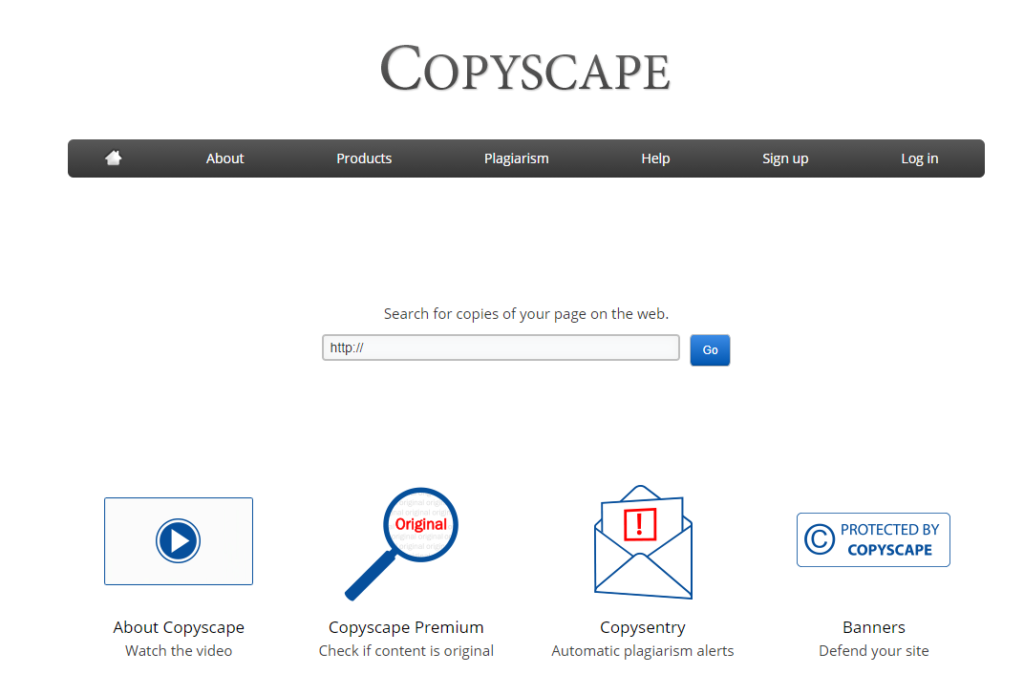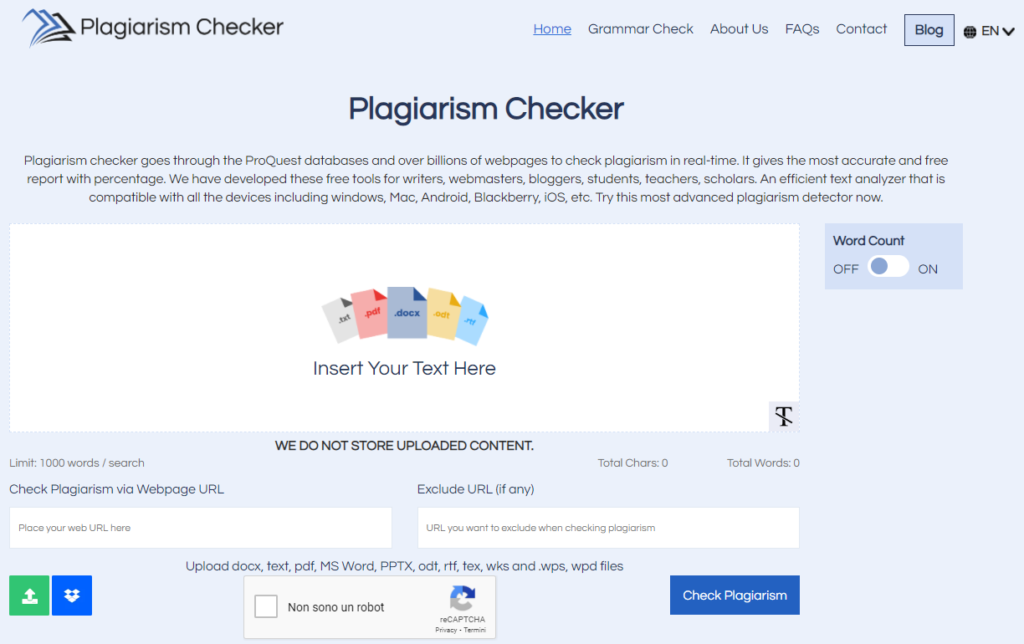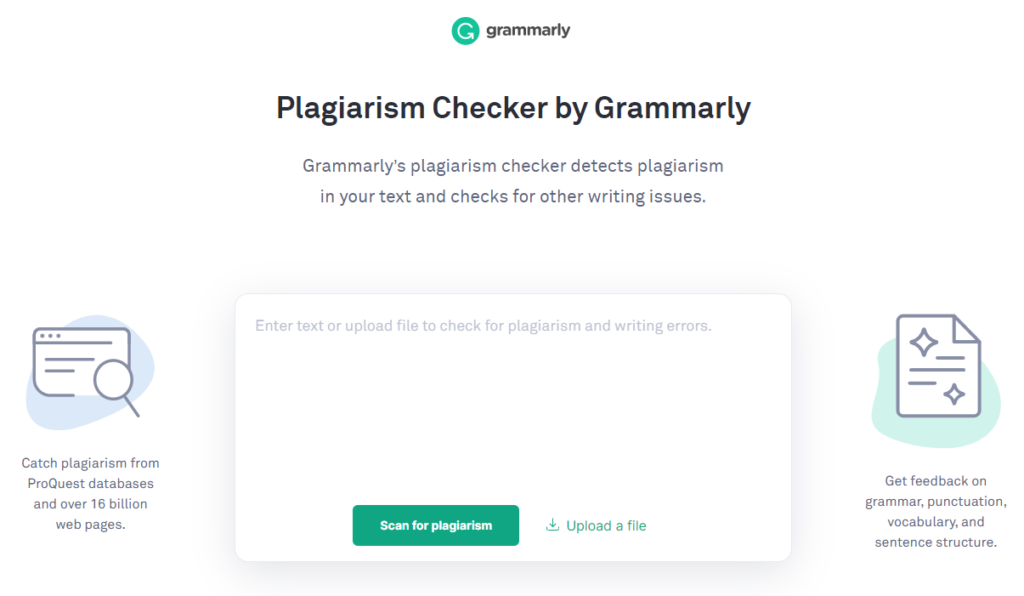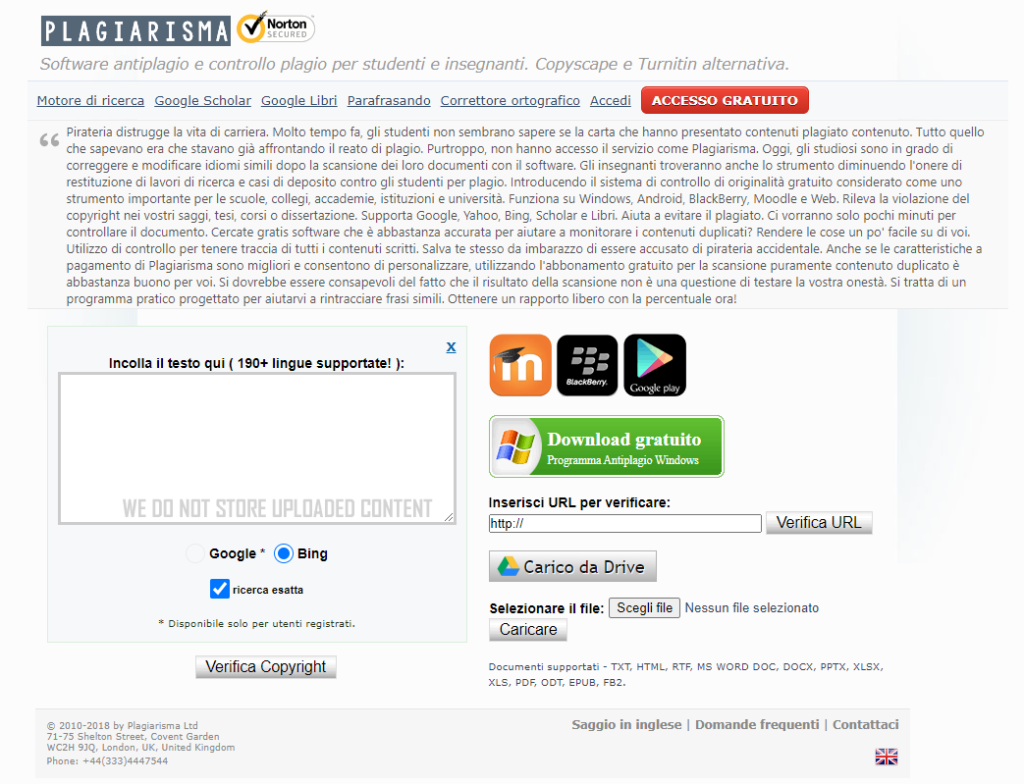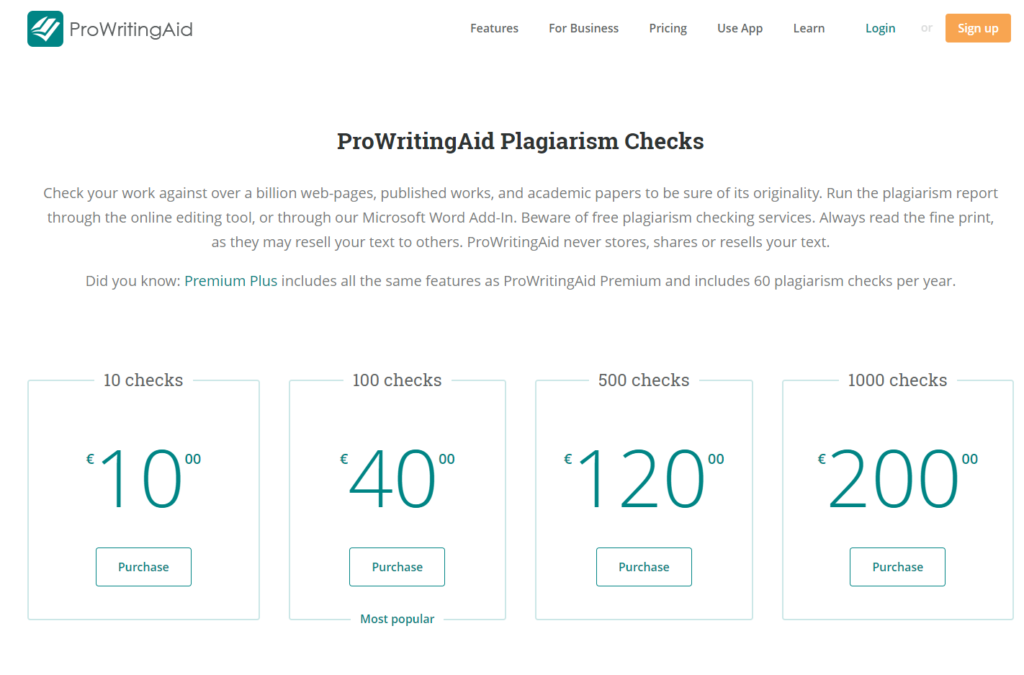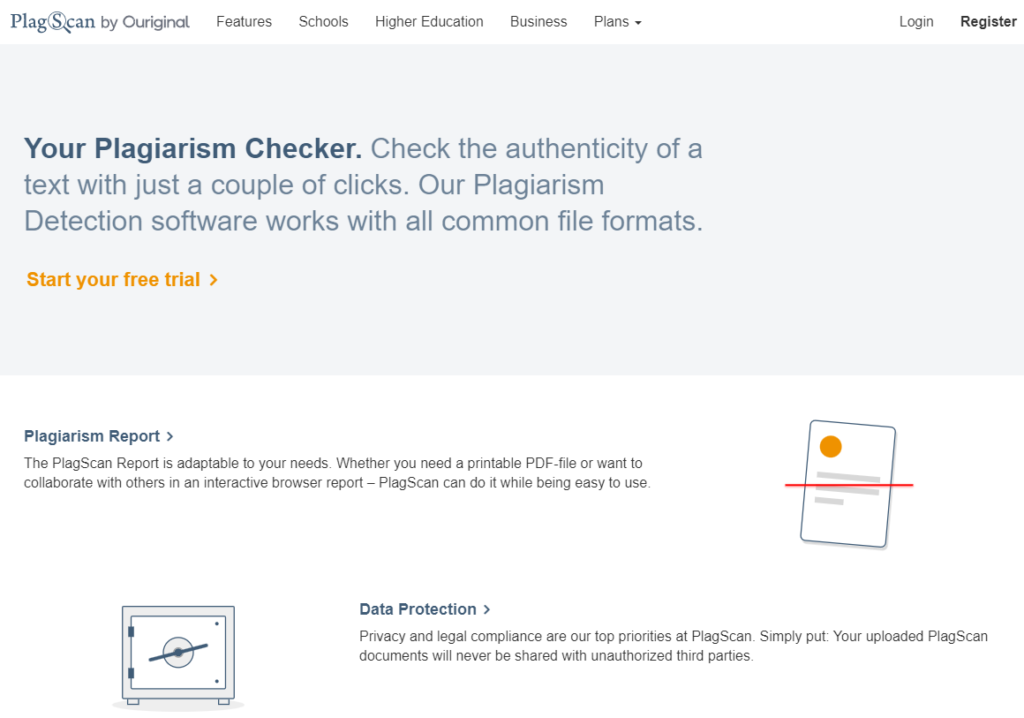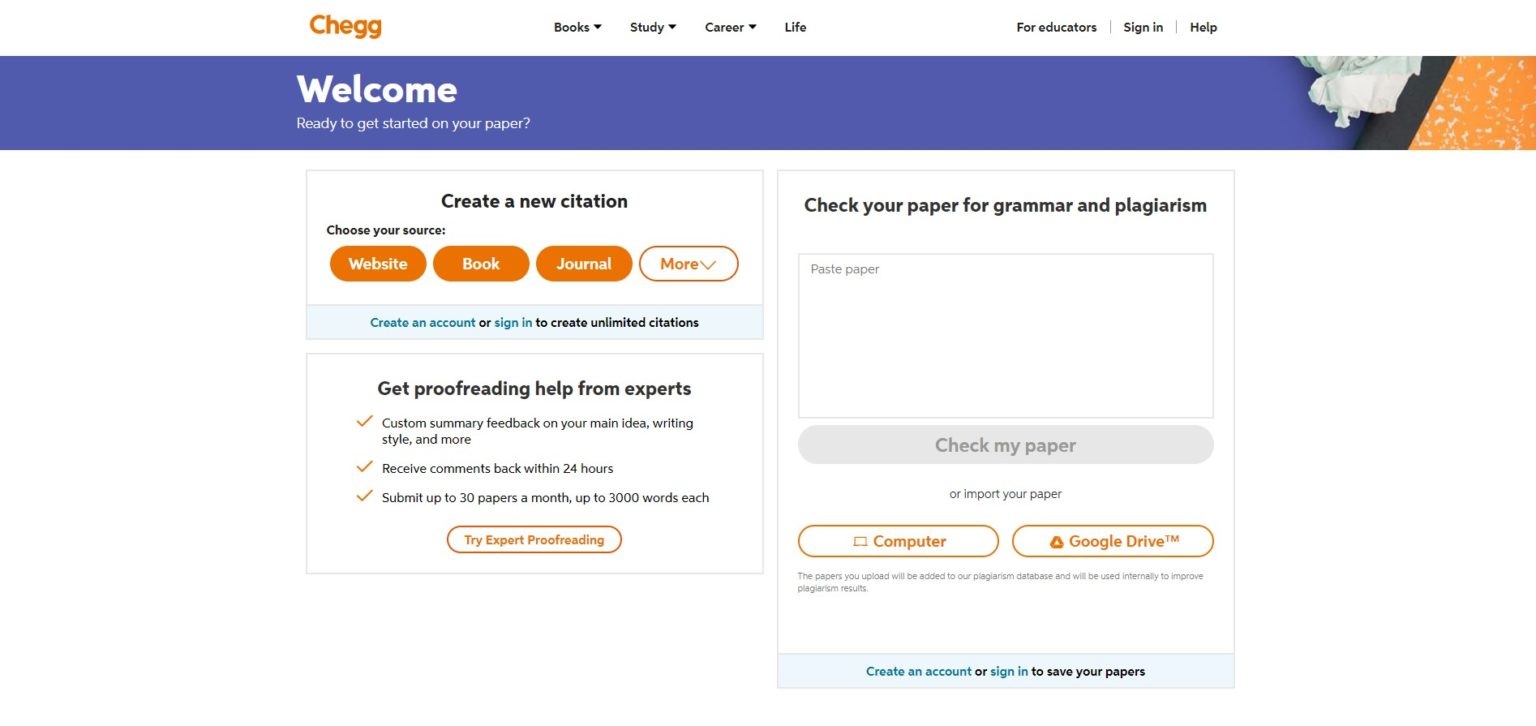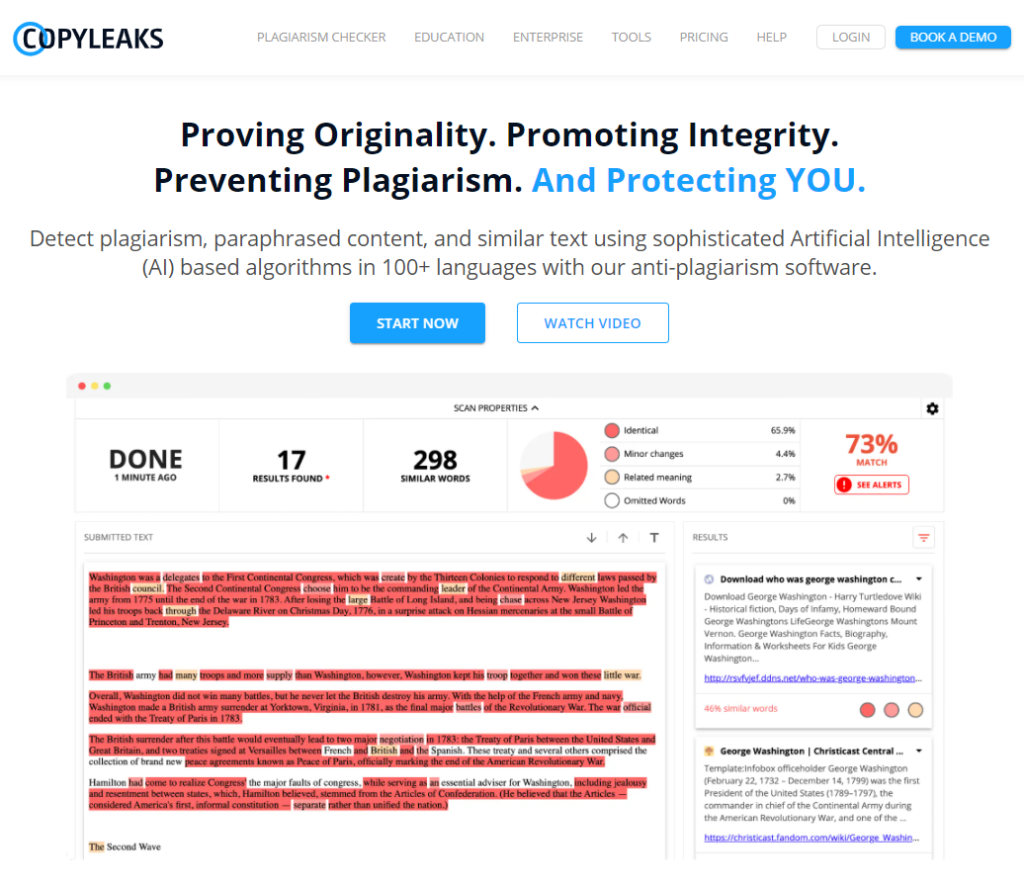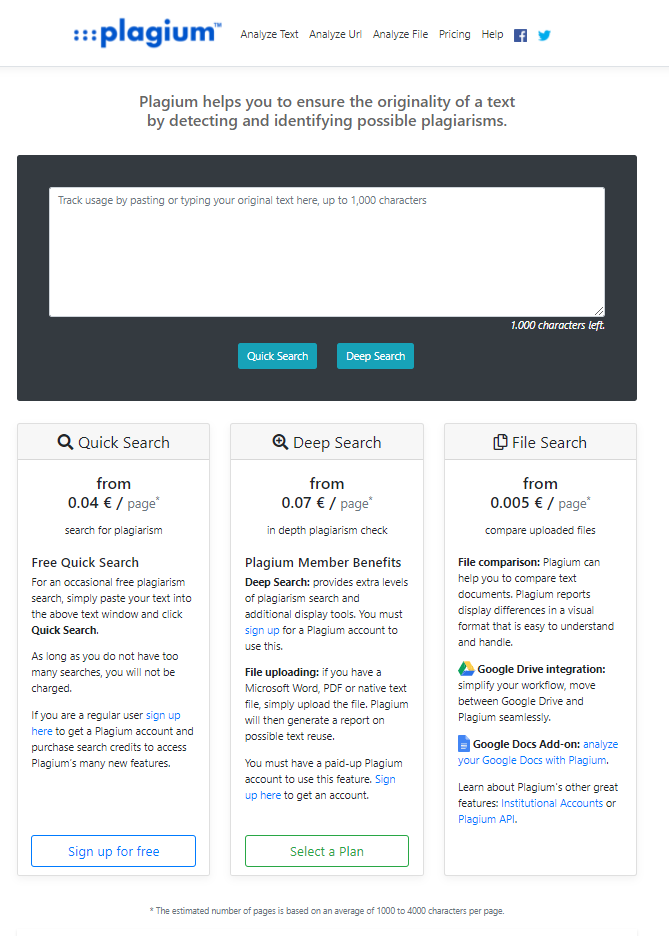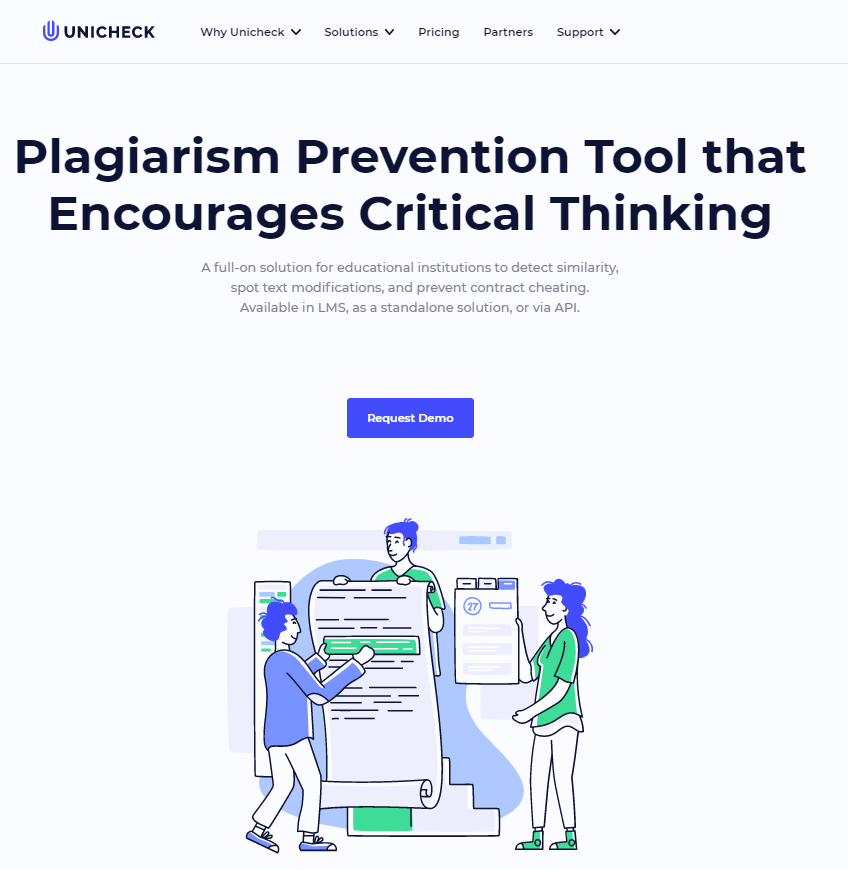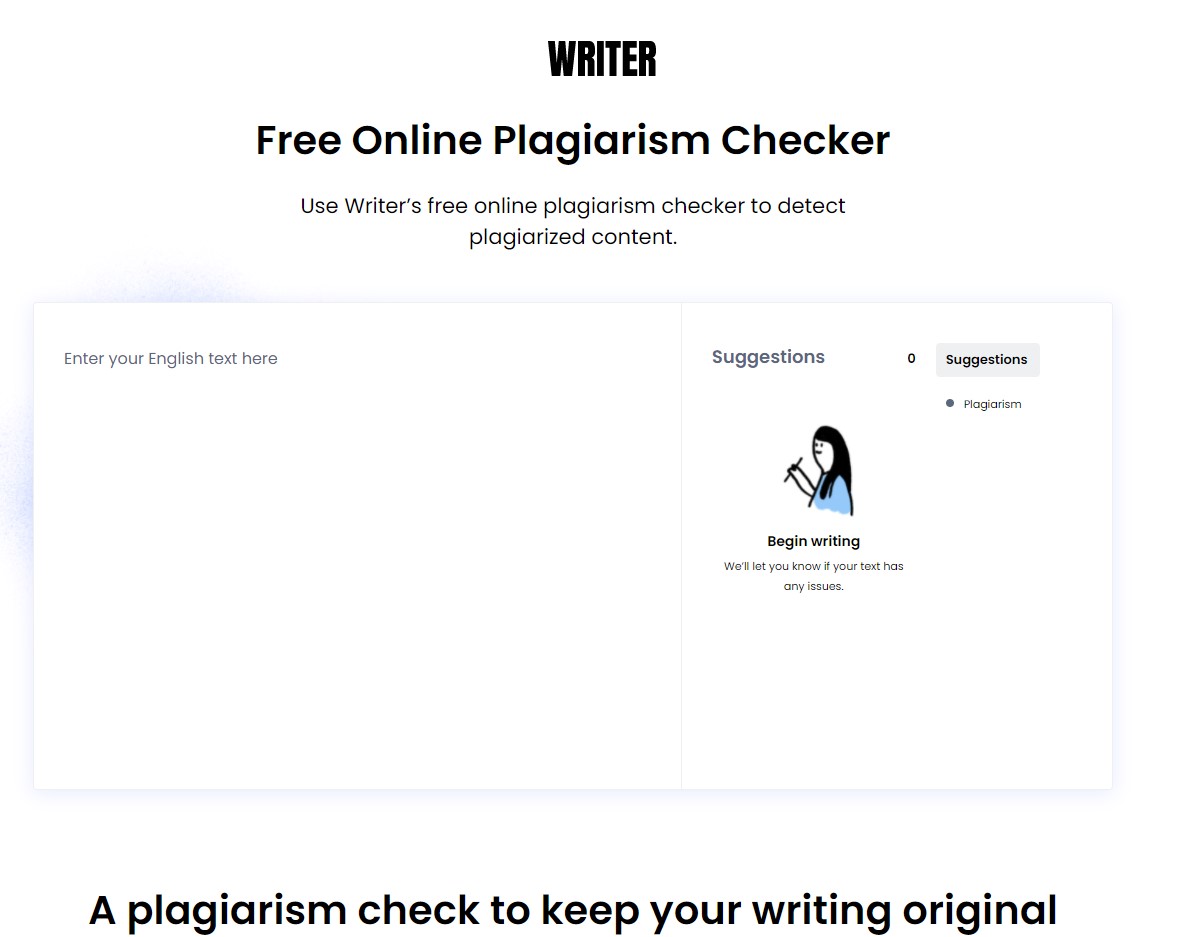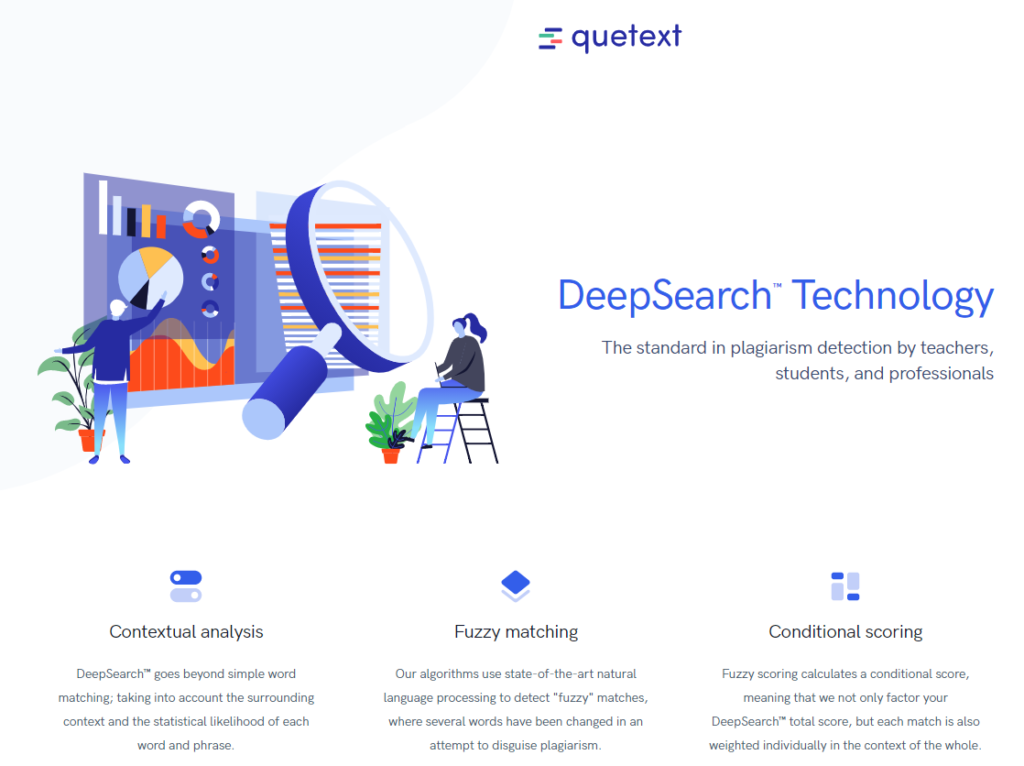Copyscape and more: the best softwares against plagiarized content
It is a doubt that often haunts publishers: is the text I am about to publish an original or are there copied parts? Verification of plagiarism is a crucial stage for those who manage a site or a blog, especially with informative content, and not everyone has the budget to allocate to the premium version of Copyscape, certainly the most famous tool and used for this purpose. So here is a series of plagiarism prevention software that can serve as an alternative and that will help us to find plagiarism online and avoid the problem of duplicate content in other parts of the Web.
What is online plagiarism?
Let’s try to immediately define the phenomenon of online plagiarism, which refers to the more general rules that regulate copyright: even for sites and Web pages, in fact, plagiarism is appropriation, which takes place with a total or partial copy of the authorship of a work born from the genius of others.
It follows, then, that contents of websites (texts, photos and images) are protected by copyright, even without the presence of the classic copyright symbol (©): it is forbidden to download and reproduce such contents for use elsewhere, and even copying in full or in large part articles, reviews, news on other web pages is illegal conduct that violates the law – although, it should be noted, Article 70 of the Italian law on copyright still provides for the possibility of citing the work of others, with precise limitations of the “quantitative” kind, as well.
Those who suffer online plagiarism and therefore a violation of their copyright may require legal intervention, which usually consists in the removal of the harmful content and possibly in compensation for damages: initially, you can contact the author of the plagiarism to ask for the removal of the duplicate content, and then proceed with legal action in case of failure to agree.
Plagiarism and SEO
In summary, plagiarism is the act of stealing words or ideas of others by pretending them to be our own, and this phenomenon can have various repercussions for the performance of sites on Google and, therefore, has a SEO value.
For example, Google is trying to get rid of plagiarism, engaging in the work of contrast to the wider phenomenon of duplicate content, against which the search engine acts by penalizing the ranking of the sites involved or even removing from its Index the sites that implement such parasitic behaviors, to avoid showing in the SERP “always the same content repeated in a set of search results” and encourage “deceptive practices” that do not offer a good user experience. Yet, the problem is widespread and difficult to manage, and continues to cause situations even embarrassing for the research giant, so that it is not uncommon to run into plagiarized content unintentionally ranked better than the original content.
From an SEO perspective, then, having duplicate or plagiarized content on the site is a risk to the ranking of our project, which can lead to a worsening of our visibility and reputation online.
How to manage plagiarism
We understand why it is important to remain vigilant and be proactive in protecting the originality of our content.
Sometimes, plagiarism is malicious and the perpetrator knowingly steals someone else’s work, presenting it as an original idea. In other cases, it may be the result of an innocent error, such as forgetting to insert a quotation to the author or not properly reworking (paraphrasing) the original concept of others.
In short, it is a possibility to be taken into account, which concerns not only the outside (the copy that other sites can make of our pages), but also our publication work (that is, we can also fall into the plagiarism of other people’s texts).
But before we can deal with the plagiarism, we have to be able to detect it first, and luckily on the Net there are various plagiarism checker softwares that can help us in this activity, identifying the portions of text that are too similar to others already published or signaling if other sites have re-proposed our content.
Plagiarism check, the best tools to avoid copies
When it comes to plagiarism checker programs the thought immediately runs to Copyscape, which is probably the best-known tool to effectively verify whether a site contains plagiarized content or not.
Copyscape provides a free plagiarism check to find out if our pages have online copies, allowing you to enter a URL address on which to perform analysis to prevent theft and fraud of content.
Much more powerful is the paid solution, which offers better plagiarism detection than the free service and a number of other features, including copy-paste originality controls for offline text, PDF and Word file uploads, batch search (which does a check on up to 10,000 pages in a single operation), private index, case monitoring, an API and integration with WordPress.
When it comes to testing the presence of plagiarism, Copyscape is probably still the preferred reference for students, teachers, writers, bloggers and other content creators. Since 2018, however, its cost has increased, going from a flat rate of 5 cents per search to a variable price model, which charges 3 cents for the first 200 words and 1 cent for every 100 additional words after this threshold.
Copyscape, free and valid alternatives against plagiarism
In recent years, artificial intelligence technologies have progressed a lot and several alternatives to Copyscape have carved out a place in the market, as noted by Julia Mccoy in a recent article on Search Engine Journal: some of these plagiarism checker softwares are free, while others have payment plans comparable or lower than those proposed by Copyscape.
Among these free tools there is indeed, for instance, Plagiarism Checker, a free platform and with an interface that is simple to use, which is also compatible with Windows, Mac, Android, iOS and Blackberry also allows you to load directly from Dropbox.
In order to start the check we can directly enter the text, upload a file or paste the URL of a web page; also interesting is the possibility to check the site excluding a specific URL. Among the negative aspects, we point out that the single search is limited to a content of 1000 words at most, and so if we have longer articles we have to perform multiple checks.
Among other sites such as Copyscape but free we can find Copygator, very useful since it also allows you to analyze the RSS feed of a website and receive alerts if the content has been republished elsewhere.
There are two options to use this feature: add an image badge to the blog (if the badge turns red, Copygator found that our content is duplicated on another site), or paste the RRS feed directly into Copygator and then click the button “Watch this feed” on the site, which will start monitoring all subsequent posts.
Currently, nearly 10 million sites use this plagiarism prevention tool, which compares nearly 400 million blog posts.
Sites like Copyscape to avoid copied content
If we are looking for other paid solutions there are many online programs that can do our case.
One of the most effective tools is Grammarly: mainly known as a proofreading tool that checks grammar and analyzes text for readability and opportunities for improvement, actually the site also offers a plagiarism check that compares text or files with 16 billion web pages and academic documents.
In the free version it is possible to generate an instant report that informs about the problems found in the document and the possible presence of plagiarism, but does not indicate exactly where those errors are. You then need the premium paid version, which goes much deeper by marking sentences, providing references to the source, offering advanced feedback and assigning the document an originality score.
Very good is Plagiarisma, available in both free and paid version: its main advantage is that it can support more than 190 different languages, and we can upload texts directly on the website or rely on plugins Windows, Android, Blackberry or Moodle.
To start the check we can paste the text in the appropriate box, upload a file or enter a live URL to verify the presence of duplicate content.
Other online plagiarism prevention softwares
A strong competitor of Copyscape is ProWritingAid, which provides only paid subscription plans based on the number of checks and not on word count – which is why it is much appreciated by authors and writers of long content such as novels and screenplays.
ProWritingAid works with both Windows and Mac and is able to integrate, among others, with Chrome, Firefox, Edge, Safari, Microsoft Word, Google Docs, Gmail, Open Office and Scrivener. All its desktop features are also available directly in the web editor, if we do not want to install the software, and in the premium version gives access to other tools such as contextual thesaurus, grammatical control, readability reports and more.
Plagscan is recommended especially to academic institutions, because its index includes academic and scientific journals, as well as supporting almost all types of common files. Like other plagiarism checker tools, it allows you to copy and paste text directly, upload a file or type a URL to control, and also offers the extra function of setting different filters and rules for plagiarism checks, so that the program knows how sensitively it will analyze duplicate information. Its cost, however, could be a bit prohibitive for the needs of a single user.
The world of education and study is also dedicated Chegg, an all-in-one tool that helps users to detect and correct accidental plagiarism and writing errors, allowing students in particular to proactively identify errors and to constantly improve their writing, with the aim of helping them to become “committed and ethical” researchers and writers.
The tool offers, in particular:
- Plagiarism control, which scans a document from millions of sources.
- Advanced grammar check, which finds more than 400 grammatical errors and style of writing.
- Writing feedback supported by a paper checker powered by artificial intelligence
In the free version, Chegg allows you to use the antiplagium tool for free, albeit with some limitations.
Very basic and with an easy to use interface even for beginners is Plagiarism Detector, free up to 25,000 words (but with a limit of 1000 words per check) or with different levels of monthly subscription. To use it, we can paste the text directly into the analyzer, or upload a file, check a URL and exclude a URL, with the ability to check the grammar and verify the presence of plagiarism.
Copyleaks promises to detect plagiarism, paraphrased content and similar text using sophisticated artificial intelligence (AI) algorithms in over 100 languages, and among the features included are text comparisons, a programming code check, a tool to search for duplicate files and site comparisons. The free version allows you a maximum of 20 scans each month, but features are limited.
Plagium offers both a free and paid version, and of course the latter has many more features: for example, the free checker allows you to perform a quick search and analyzes up to 1,000 words at a time, while deep search is a paid feature.
Even more limited is the free version of Unicheck, which allows a free plagiarism check on texts of only 200 words at a time: in the paid version, however, this tool offers many features, also scanning the links to the corresponding sources and reporting if the URL seems to lead to a dangerous site.
A good free solution – but with the ability to extend functionality thanks to subscription packages – is Writer’s plagiarism checker, which allows you to control the presence of plagiarism without any character limit.
When the algorithm finds that parts of the text we have inserted are “too similar” to something already published online or present in the system database, we receive an alert message that also reports the indicted source.
Finally, Quetext is a tool that slightly differs from the previous ones, because (in the free version) it allows to perform a plagiarism check only on texts copied and pasted in the site box, and not through live url. However, the free feature extends to a 5-page or 2,500-word check, with “fuzzy matching” notices (reqorking of text to avoid plagiarism), contextual analysis, and conditional scoring based on other parameters.
The strengths of online plagiarism prevention softwares
Each of these plagiarism checker tools obviously has its strengths and its most critical aspects (which often concern the cost).
If Copyscape still remains one of the most popular plagiarism detection tools available today, it is not said that its competitors are less valid, indeed.
For example, Grammarly and ProWritingAid stand as excellent allies and comprehensive tools for plagiarism control and proofreading analysis; on the contrary, if our need is to meet the budget and then use a free alternative to Copyscape, we can refer to Plagiarism Checker or Copygator, with the latter also allowing us to regularly scan the RSS feed of the site.
In short, the choice of the best plagiarism prevention tool is definitely subjective and depends on many variables, starting from our personal and professional needs.
What is important is not to lose sight of the texts and protect the contents of our brand by investing time (and possibly money) in the anti-protest controls, so as to constantly monitor that our site only publishes original content and that there are no stolen copies in other places on the Web.



